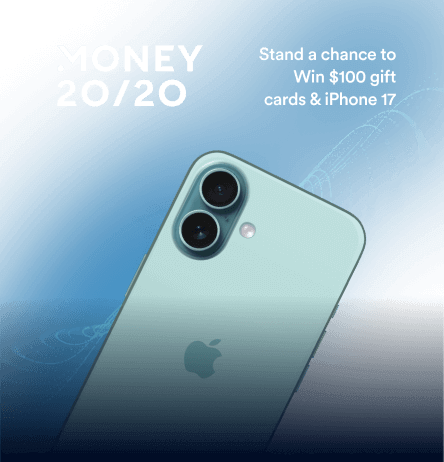Marketers use cross-channel marketing to meet their customers wherever they are, creating a smooth journey over multiple platforms. This article explores what cross-channel marketing is and looks at some real-world examples of how it’s helping brands thrive.
What is Cross-Channel Marketing?
Cross-channel marketing is a strategic approach where businesses engage with customers across multiple platforms or channels. The goal is to create a smooth and cohesive customer journey, regardless of the medium used. For example, a customer might see a social media ad, receive a follow-up email, and then visit the brand’s website—all part of a coordinated effort. Each channel serves a specific purpose but is interconnected to support one unified marketing strategy.
This method harnesses the strengths of each channel, ensuring that messages are consistent and reinforcing throughout the entire customer journey. It helps you to understand where your audience is, how they like to receive information, and how to craft a strategy that meets them in those spaces. The data collected from these interactions helps you fine-tune the campaign, improve targeting, and ultimately boost your conversion rates. The essence of cross-channel marketing lies in integration, ensuring that no matter where a customer engages with the brand, the experience feels unified and intentional.
Cross-Channel vs. Omnichannel Marketing
It’s easy to confuse cross-channel and omnichannel marketing because both involve using multiple platforms. However, the key difference lies in the level of integration and focus on customer experience. Cross-channel marketing, while integrated, is more about using multiple channels in a coordinated manner to guide the customer through a journey. Its primary aim is to create touchpoints that complement each other.
Omnichannel marketing takes this a step further by creating a fully integrated customer experience where the lines between channels blur. In an omnichannel strategy, the customer can switch between channels without any disruption in the experience. The focus is on delivering a consistent, personalized journey across all channels, with customer data and preferences driving the interactions at every step.
While cross-channel strategies are highly effective and easier to implement, omnichannel strategies require a more sophisticated approach and can demand more resources. The distinction often gets blurred in discussions, but understanding these nuances can help businesses decide which approach aligns best with their goals and capabilities.
Importance of Cross-Channel Marketing
Today’s customers are more connected and have higher expectations than ever before. They interact with brands across many platforms, including social media, email, websites, and physical stores. Cross-channel marketing recognizes this reality and aims to create a cohesive experience that meets customers wherever they are. This kind of approach is important for several reasons.
Cross-channel marketing enhances brand visibility and reach

By being present on multiple platforms, businesses can reach a much wider audience. Increased exposure is not just about being seen but also about being remembered. A customer who encounters consistent messaging across different channels is more likely to recall the brand and what it is selling.
Secondly, it provides valuable insights into customer behavior. By tracking interactions across channels, businesses can gain a deeper understanding of their customers’ buying journey. This data is invaluable for refining marketing strategies and improving the overall customer experience.
Cross-channel marketing fosters stronger customer relationships
Cross-channel marketing allows brands to engage with customers in a more personalized manner based on their preferences and behaviors. If a customer browses products on a mobile app but doesn’t make a purchase, a follow-up email with recommendations can re-engage them. This kind of targeted communication helps in building trust and loyalty.
Another critical aspect of cross-channel marketing is the ability to provide a smoother customer experience. Today’s consumers expect smooth transitions between online and offline interactions. A well-executed cross-channel strategy ensures that a customer’s journey feels integrated and uninterrupted, whether they’re interacting with a brand on social media, through email, or in a physical store.
Cross-channel marketing can significantly boost conversion rates
When customers receive consistent and reinforcing messages across all channels, it establishes a compelling narrative that guides them toward making a purchase. This also allows brands to reach customers at different stages of their decision-making process, providing relevant content and offers that can drive conversions.
Cross-channel marketing attribution improves campaign effectiveness
A good cross-channel marketing campaign also allows businesses to pinpoint which channels and touchpoints drive the most conversions, helping them make more informed decisions on where to allocate resources. By understanding the customer journey in its entirety, marketers can fine-tune their strategies to focus on the most impactful interactions, ultimately driving better ROI and optimizing future campaigns.
Cross-Channel Marketing Examples
Developing a cross-channel marketing strategy allows brands to craft a unified and engaging narrative across various platforms, which can drastically improve the entire customer experience. By employing this strategy, companies can create consistent messaging that resonates with their audience. Here are some great cross-channel marketing campaigns used by major brands to strengthen brand presence and customer loyalty.
1. Under Armour’s “Rule Yourself” 
Under Armour’s “Rule Yourself” campaign showcases a cross-channel approach that emphasizes athletic discipline and dedication.
- Digital and Social Media: The campaign features high-profile athletes and is promoted through online videos, social media posts, and digital ads.
- In-Store Experience: In-store displays and promotions highlight the campaign’s theme, connecting the digital messaging with the physical shopping experience.
- Mobile App and Email: Under Armour’s app and email marketing provide workout tips, product information, and exclusive deals, encouraging a deeper engagement with the brand’s ethos. This strategy not only markets products but also builds a community around the brand.
2. H&M’s “Conscious Collection”

H&M’s “Conscious Collection” campaign focuses on sustainability and ethical fashion, using a cross-channel approach to communicate its message.
- Social Media and Influencers: H&M partners with influencers and uses social media to promote the collection, highlighting sustainable materials and practices.
- In-Store and Online Integration: The collection is prominently featured in stores and on the H&M website, with additional content about the brand’s sustainability efforts.
- Email Marketing and Mobile App: H&M uses these channels to inform customers about the collection, share sustainability tips, and offer exclusive discounts. This integrated campaign helps position H&M as a leader in sustainable fashion, appealing to eco-conscious consumers.
3. Airbnb’s “Live There” Campaign

Airbnb’s “Live There” campaign encourages travelers to experience destinations like locals, using a comprehensive cross-channel approach.
- Online Advertising and Content Marketing: The campaign includes digital ads, blog posts, and video content that highlight unique travel experiences and local insights.
- Social Media: Airbnb uses social media platforms to share user-generated content, travel stories, and destination guides, fostering a sense of community among users.
- Email and App Notifications: Personalized recommendations and curated travel itineraries are sent through email and app notifications, enhancing the planning experience. This strategy helps Airbnb differentiate itself from traditional hotels by emphasizing authentic, local experiences.
4. Vodafone’s “Future Ready” Campaign

Vodafone’s “Future Ready” campaign showcases how a telecom company can leverage cross-channel marketing to promote its services and technology.
- TV and Online Advertising: The campaign launched with TV commercials and online ads highlighting Vodafone’s advanced network capabilities and future-proof technology.
- Website and Mobile App: Vodafone’s website and app provided in-depth information about the services, customer testimonials, and options to sign up or upgrade plans.
- Retail Stores: In-store promotions and informational displays complemented the digital efforts, allowing customers to experience the technology firsthand. This campaign effectively integrated digital, traditional, and in-store channels to present a cohesive message about innovation and reliability.
How CleverTap supported Vodafone’s cross-channel marketing strategy
CleverTap provided a unified cross-channel marketing platform for Vodafone to manage and personalize customer interactions across multiple channels. This integration allowed Vodafone to double conversions by identifying a crucial 2-minute engagement window and significantly improve click-through rates (CTR) for onboarding campaigns by 15%. CleverTap’s analytics and segmentation tools enabled Vodafone to target specific user groups with timely, contextual messages, enhancing engagement and retention. By consolidating messaging across SMS, email, and in-app notifications, Vodafone could deliver a cohesive and personalized customer experience, driving loyalty and long-term customer value.
Final Thoughts
Cross-channel marketing is not just a trend but a necessity in the modern marketing landscape. It helps businesses stay relevant, better understand their customers, and ultimately drive growth. Companies can then create a cohesive and memorable customer journey, enhancing brand recall and loyalty. With tools like CleverTap, businesses can fine-tune their messaging, making interactions more personalized and relevant. As we move forward, embracing cross-channel marketing will be key to meeting customer expectations and staying competitive in an ever-evolving market. So, are you ready to integrate your channels and elevate your brand’s story? The future of marketing is interconnected, and the time to start is now.
Subharun Mukherjee 
Heads Cross-Functional Marketing.Expert in SaaS Product Marketing, CX & GTM strategies.
Free Customer Engagement Guides
Join our newsletter for actionable tips and proven strategies to grow your business and engage your customers.
















































